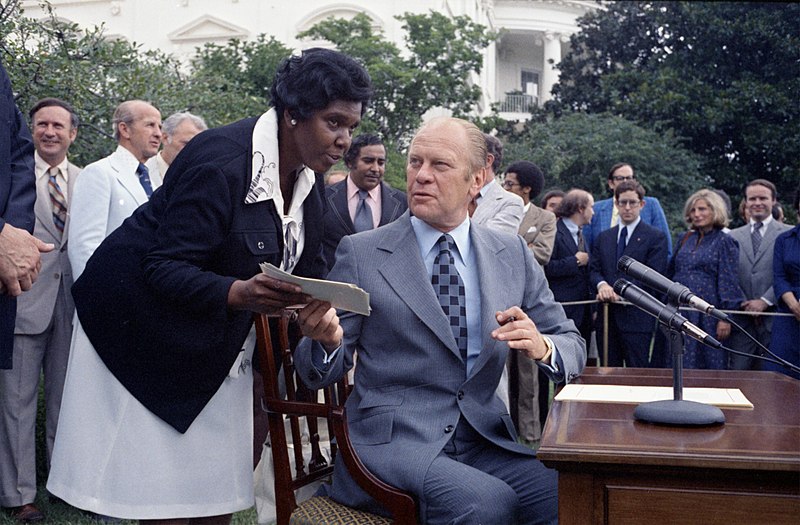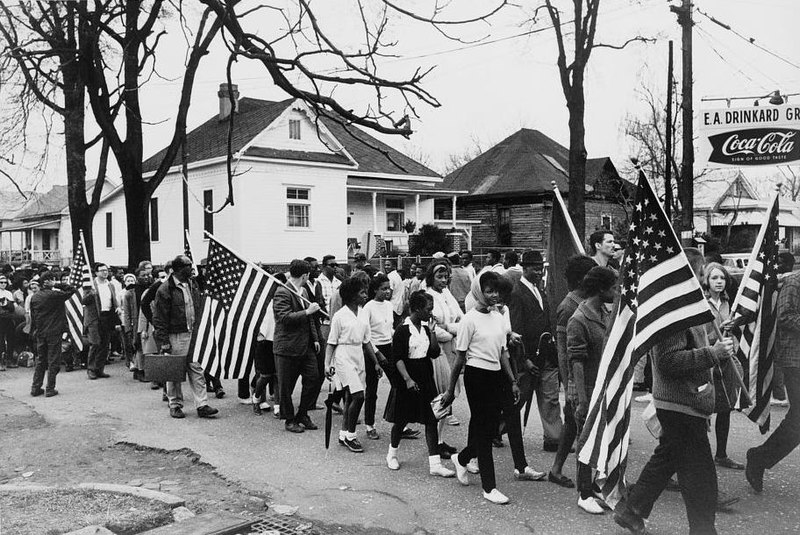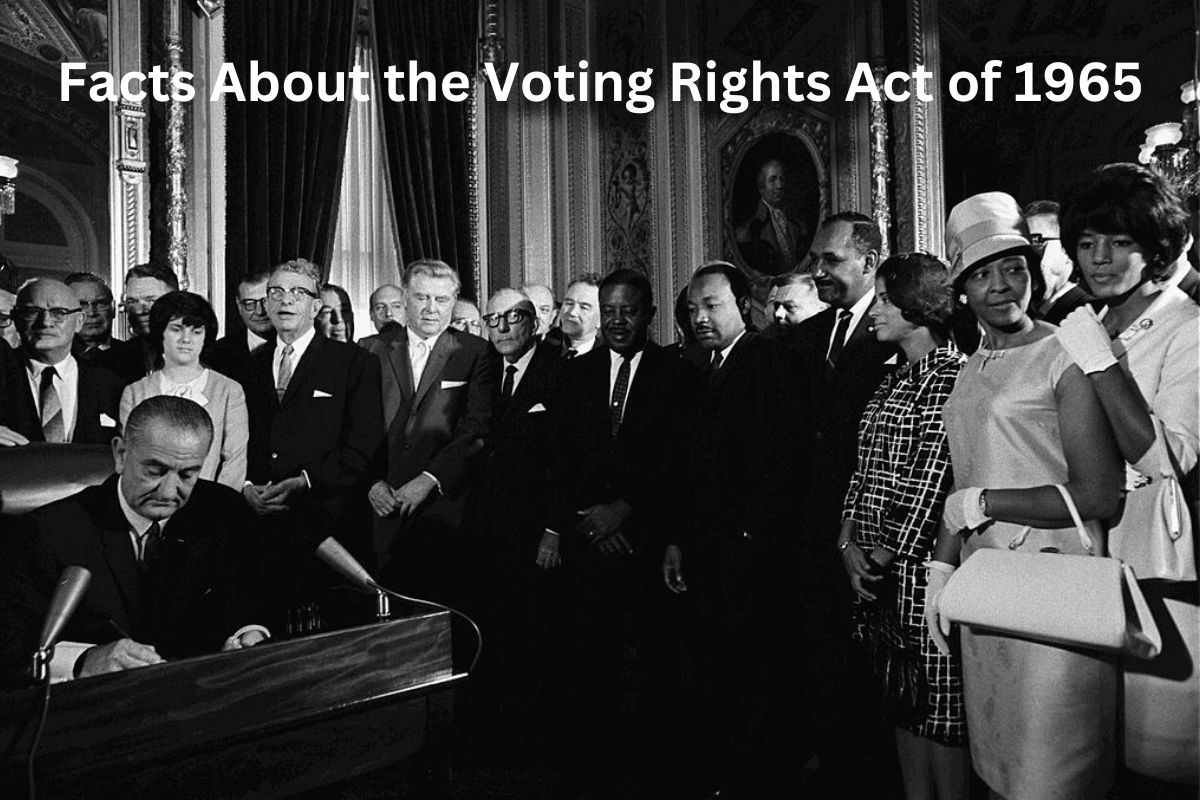The Voting Rights Act of 1965 is a landmark piece of legislation in the United States that aimed to overcome barriers that prevented African Americans from exercising their right to vote.
Signed into law by President Lyndon B. Johnson, the act targeted discriminatory practices such as literacy tests, poll taxes, and discriminatory voter registration processes. It had a significant impact on increasing African American voter registration and turnout, especially in the South.
The act’s provisions, including Section 2, Section 4(b), and Section 5, were designed to eliminate racial discrimination in voting practices and ensure equal access to the ballot box.
While the VRA has undergone reauthorizations and amendments, a 2013 Supreme Court ruling struck down a key provision, leading to ongoing debates and discussions about its necessity and effectiveness in safeguarding voting rights.
Voting Rights Act of 1965 Facts
1. The Voting Rights Act of 1965 (VRA) is a landmark piece of legislation in the United States
The Voting Rights Act of 1965 was a response to the systematic disenfranchisement of African Americans in the United States, particularly in the South.
Also Read: Civil Rights Act of 1964 Facts
Despite the Fifteenth Amendment to the U.S. Constitution, which granted African American men the right to vote in 1870, discriminatory practices such as literacy tests, poll taxes, and intimidation tactics were used to prevent African Americans from exercising their voting rights.
2. The VRA was signed into law by President Lyndon B. Johnson on August 6, 1965
The VRA was a pivotal moment in the civil rights movement. It was signed into law by President Lyndon B. Johnson on August 6, 1965, after a long and hard-fought struggle by civil rights activists and organizations.
Also Read: Civil Rights Movement Events
The VRA aimed to dismantle the institutionalized barriers that hindered African American political participation and representation.

3. The act targeted the practices that disenfranchised African American voters
The VRA specifically targeted discriminatory voting practices that disproportionately affected African Americans.
Literacy tests were used to disqualify potential voters based on their ability to read and write, which effectively excluded many African Americans who had been denied educational opportunities due to segregation.
Also Read: Jim Crow Facts
Poll taxes required voters to pay a fee, which was often deliberately set at an amount many African Americans could not afford. These practices were used to deter African Americans from voting or to make the voting process excessively burdensome for them.
Additionally, discriminatory voter registration processes, such as the requirement to prove “good moral character” or to pass a subjective “character” test, were employed to prevent African Americans from registering to vote. The VRA sought to eliminate these barriers and ensure equal access to the ballot box for all citizens.
4. Section 2 of the VRA prohibits any voting practice or procedure that discriminates on the basis of race, color, or membership in a language minority group
Section 2 of the Voting Rights Act of 1965 is a crucial provision that prohibits any voting practice or procedure that discriminates based on race, color, or membership in a language minority group.
Also Read: Timeline of the Jim Crow Laws
This section applies nationwide and provides individuals with legal recourse to challenge discriminatory voting practices. It has been widely used to challenge practices such as gerrymandering, restrictive voter ID laws, and the reduction of early voting periods that disproportionately affect minority communities.
5. Section 4(b) of the VRA established a coverage formula that identified jurisdictions with a history of discriminatory voting practices
Section 4(b) of the VRA established a coverage formula to determine which jurisdictions would be subject to the preclearance requirement outlined in Section 5.
The coverage formula was based on the historical use of discriminatory voting practices and applied to jurisdictions with a demonstrated record of voter suppression, primarily in the South.
These jurisdictions had to seek approval from the U.S. Department of Justice or a federal court before implementing any changes to their voting laws or practices. The preclearance requirement was designed to prevent discriminatory changes from being enacted.

6. Section 5 of the VRA enforced the preclearance requirement
Section 5 of the VRA was a significant enforcement mechanism that required covered jurisdictions to obtain federal approval for any proposed changes to their voting laws or practices.
The Department of Justice or a federal court would evaluate whether the proposed changes had a discriminatory purpose or effect on minority voters. This requirement acted as a safeguard against the introduction of discriminatory measures.
It provided an ongoing review process to ensure that changes in voting laws did not undermine the progress made in securing voting rights for all citizens.
The preclearance requirement was crucial in preventing discriminatory voting practices from being reintroduced in jurisdictions with a history of voter suppression. It played a vital role in maintaining and expanding voting rights for African Americans and other marginalized communities.
7. The VRA had a significant impact on increasing African American voter registration and turnout, especially in the South
The Voting Rights Act of 1965 had a profound impact on increasing African American voter registration and turnout, particularly in the South. Prior to the VRA, many Southern states implemented discriminatory practices that effectively prevented African Americans from registering to vote.
However, following the passage of the VRA and subsequent court challenges, African American voter registration rates began to rise significantly. By 1968, African American voter registration had increased substantially in previously discriminatory jurisdictions.
This increase in political participation played a crucial role in empowering African American communities and amplifying their voices in the democratic process.
8. The VRA was reauthorized and amended several times since its enactment
Since its original passage, the Voting Rights Act has undergone multiple reauthorizations and amendments. The most recent reauthorization occurred in 2006 when it was extended for another 25 years.
This reauthorization received broad bipartisan support in Congress and aimed to address ongoing challenges to voting rights. However, subsequent events and legal developments have brought the effectiveness of certain provisions into question.
9. In the 2013 case Shelby County v. Holder, the United States Supreme Court struck down the coverage formula in Section 4(b) of the VRA
In 2013, the United States Supreme Court delivered a significant ruling in the case of Shelby County v. Holder. The Court struck down the coverage formula in Section 4(b) of the VRA, which determined the jurisdictions subject to the preclearance requirement.
The Court argued that the formula was based on outdated data and violated the principles of equal sovereignty among states. As a result, the preclearance requirement was effectively rendered unenforceable unless Congress could update the formula to address the Court’s concerns.
10. The VRA continues to be a subject of debate and controversy
The VRA continues to be a subject of debate and controversy. Advocates argue for its restoration and expansion, asserting that new challenges to voting rights have emerged, such as voter ID laws, gerrymandering, and the closure of polling places in minority communities.
They argue that a robust VRA is necessary to protect the gains made in the past and to ensure equal access to the ballot box for all citizens. On the other hand, opponents express concerns about federal overreach and argue for the prioritization of state authority in elections.
They contend that the VRA, as previously applied, may no longer be necessary or that alternative measures should be put in place to address any ongoing concerns about voter suppression. The ongoing debates highlight the importance of balancing voting rights with the principles of federalism and the complexities of ensuring fair and accessible elections for all Americans.
